The 1950 release D.O.A., directed by Rudolph Maté and written by Russell Rouse and Clarence Greene, stands as an archetypal film noir movie whose taut premise converts a ticking-clock narrative into an existential journey. From its opening shot of a man walking into a police station to report his own murder, to its revelation of greed, betrayal, and fatal irony, D.O.A. is as much a parable about mortality and moral accountability as it is a tightly wound crime drama. This article examines the film as a landmark film noir movie, exploring its plot, craft, performances, themes, production background, critical reception, and enduring legacy.
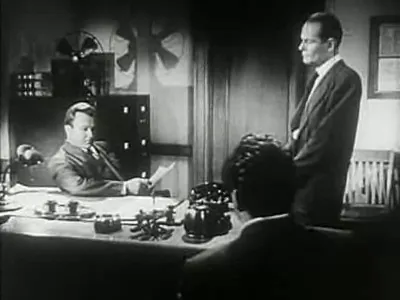
Outline
- Introduction to D.O.A. as a film noir movie
- Detailed plot retelling and structural analysis
- Principal performances and character study
- Directorial approach, cinematography, and mise-en-scène
- Music, sound, and atmosphere in a film noir movie
- Production notes, locations, and historical context
- Themes, motifs, and noir philosophy
- Critical reception, legacy, and preservation
- Why D.O.A. remains essential viewing for anyone studying the film noir movie
- Conclusion
Introduction: The Premise That Turns Time Into Motive
D.O.A. begins with a premise so simple and striking that it immediately establishes the film’s moral geometry: Frank Bigelow, a mild-mannered accountant and notary public, walks into a police station to report his own murder. From that moment forward, the film noir movie unfolds as a flashback — a backward-running engine driven by an inexorable countdown. The story is at once procedural and philosophical: the procedural elements lead to the culprit, but the philosophical core animates why a man, suddenly with certainty of his impending death, chooses to spend his last hours pursuing truth rather than comfort.
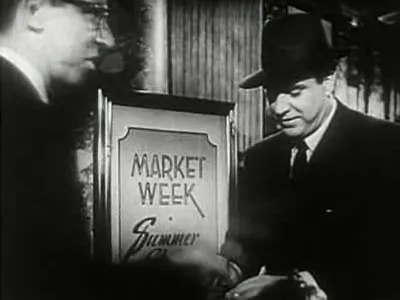
This duality — an efficient crime plot married to existential stakes — is the beating heart of D.O.A. As a film noir movie, it is emblematic of the postwar era’s anxieties: the everyday man ensnared by forces of corruption and secrecy, the fragility of reputation, and the ambiguous nature of justice. The film operates both as a detective story and as an elegy for a way of life threatened by the greed and moral compromise of others.
Plot: A Minute-by-Minute Pursuit in Reverse
The narrative structure of D.O.A. is deliberately compressed and economical. Frank Bigelow’s initial visit to the police station to report his own death functions as the frame: the detective listening to his story acts as stand-in for the audience. What follows is a flashback that reconstructs the thirty-six to forty-eight hours preceding Bigelow’s terminal diagnosis. The economy of the plot is a masterclass in sustaining suspense while revealing character and motive.
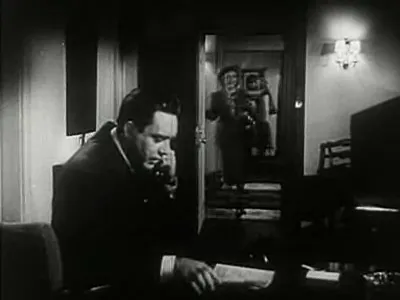
Frank Bigelow is introduced as an industrious small-town accountant in Banning, California, with an earnest secretary named Paula Gibson in love with him. He decides to take a solo vacation to San Francisco, an impulsive attempt to escape the responsibilities and expectations of his ordinary life. The film noir movie patiently details his trajectory: the cramped American dream of steady work, a secret longing for freedom, and a romance left unconsummated because of fear. Those small human moments are essential because they anchor Bigelow as a sympathetic protagonist whose moral choices matter.
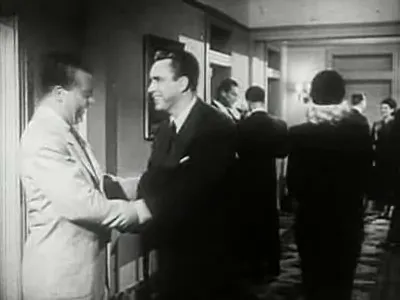
At a hotel in San Francisco, Bigelow joins a convivial group of traveling salesmen and ends up at a nightclub. The film noir movie leverages a single act — the spiking of a drink — as the fulcrum of the entire story. Unnoticed by Bigelow, a stranger swaps his drink. Overnight Bigelow feels ill and seeks medical attention. The doctors determine he has ingested a luminous toxin for which no antidote exists. With only days to live, he embarks on a fevered effort to discover who poisoned him and why.
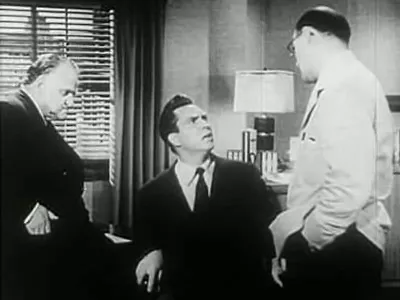
What ensues is a relentless series of inquiries — to the office of a man named Eugene Phillips, to Phillips’ family, to a chain of dubious characters including Majak and the elusive George Reynolds (also known as Raymond Rakubian), and to Marla Rakubian, a model who may have been implicated. Bigelow learns that the poisoned man’s motivation is tied to a missing bill of sale for a shipment of iridium. The document, notarized by Bigelow himself months earlier, would have cleared Phillips of criminal implication when the iridium proved to have been stolen.
This single missing piece of paper — a simple bill of sale — becomes the cunningly noir hinge: it is both proof and peril. Its absence condemns Phillips in the eyes of the law and, eventually, marks anyone who could attest to its existence as a target for those determined to erase evidence. Bigelow’s role as a notary places him in a position of unique vulnerability. He is, the film suggests, guilty only of doing his job honestly — and for that, he pays with his future.
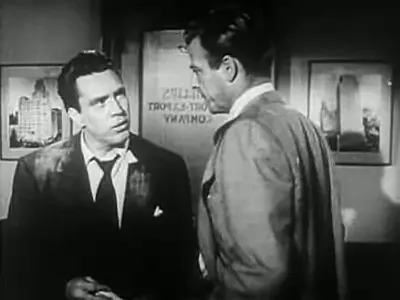
The narrative tightens into a classic noir revelation: Halliday, the company comptroller, turns out to be the moral center’s antithesis. He hides an affair with Mrs. Phillips and, when Phillips discovers the betrayal and confronts Halliday, the confrontation turns fatal. Halliday orchestrates a cover-up that includes the removal of the bill of sale and the disposal of anyone who could link him to the crime. Halliday’s final unraveling, when Bigelow identifies him as the man who switched the drinks, ends in a gunfight: Bigelow mortally wounds Halliday, but he himself expires after finishing his statement to the police.
"This is a case for homicide. Homicide? I don't think you fully understand, Bigelow. You've been murdered."
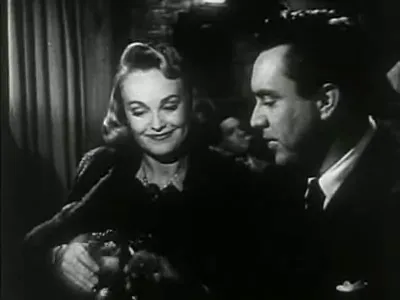
That the protagonist dies at the conclusion is typical of the moral strictness of many film noir movies: there is often a bleak fairness to the world, where truth does not guarantee survival, but it does guarantee a reckoning. Bigelow dies having uncovered the truth and, paradoxically, more alive in his moral sense than he ever was before — a powerful noir irony.
Performances: The Human Core of a Film Noir Movie
Edmond O'Brien’s portrayal of Frank Bigelow anchors the film noir movie with restraint and urgency. O'Brien plays a commonplace man whose drive and decency make his desperation credible. Bigelow is not a traditional pulp detective; he is an ordinary man transformed by extraordinary circumstances. O'Brien’s performance conveys weary competence turning to single-minded determination, and the choices he makes in the final hours feel both inevitable and heartbreakingly human.
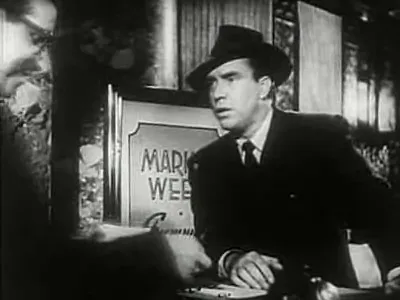
Pamela Britton’s Paula Gibson functions as the film’s moral ballast. Paula is warm, rooted, and embodies the domestic life Bigelow risks losing. Her affection and indignation make her believable as both a romantic interest and a potential moral compass. The pair’s chemistry is understated; there are no grand gestures, only the messy, real dynamics of affection and misunderstanding — precisely the kind of small-scale emotional truth that grounds the film noir movie’s broader existential stakes.
The supporting cast creates a textured urban world. Luther Adler’s Majak is a classic noir operator: slick, mercenary, and unrepentant. William Ching’s Halliday ultimately reveals the film’s central corruption. Beverly Garland and Laurette Luez provide memorable faces in a world of compromised morality, while Neville Brand’s presence as Chester injects menace and unpredictability into the proceedings. These performances together produce a community of moral ambiguity, a standard feature of the best film noir movies.
Direction and Cinematography: A Stripped-Down Visual Philosophy
Rudolph Maté, a director with a background in cinematography, brings a lean, precise visual sensibility to this film noir movie. Under Maté’s direction, shots are functional and evocative: the camera often frames Bigelow within a world that appears indifferent to his fate. The film’s black-and-white palette, handled by cinematographer Ernest Laszlo, emphasizes stark contrasts — literal chiaroscuro that mirrors moral contrasts absent of clear heroic glamour. Though the film avoids excessive stylistic flourishes, its compositions trap the viewer in the same claustrophobic forward motion that traps Bigelow.
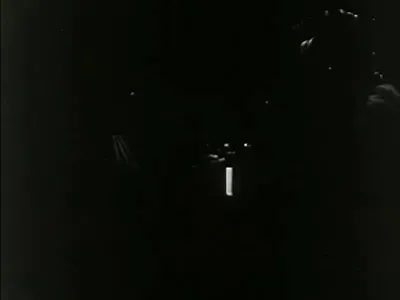
The St. Francis Hotel, the Bradbury Building, Market Street, and other real locations provide an authentic urban texture. The use of location shooting contributes to the documentary-like immediacy of the film noir movie. There’s a sense that the city is an indifferent stage, its crowds and architecture indifferent to individual suffering. Maté’s staging, often straightforward, prioritizes narrative clarity and moral recognition over atmospheric abstraction. Yet in that clarity, the film noir movie finds a chilling potency: every shot serves the story’s moral arc.
Music and Sound: Constructing an Aural Noir
Composer Dimitri Tiomkin’s score gives the film noir movie a musical language of urgency and unease. In addition to the recorded club scenes and diegetic jazz, Tiomkin’s score punctuates Bigelow’s emotional shifts. The music does not sentimentalize the action; instead, it amplifies the urban unease and the protagonist’s accelerating anxiety. Sound design is practical and unobtrusive, with the notable exception of the nightclub sequence, where the spiking of a drink — a tiny sound in any other film — becomes the narrative pivot in this film noir movie.
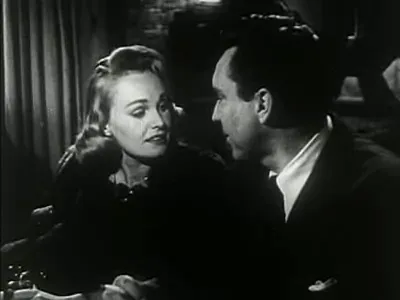
Notably, the nightclub band used in the film was filmed in Los Angeles and later re-recorded for the soundtrack. The jazz elements situate the film noir movie historically and tonally: they root the action in the immediate present of late 1940s urban nightlife and provide a cultural texture that contrasts with Bigelow’s small-town propriety.
Production Context and Notable Locations
D.O.A. was produced by Leo C. Popkin and released by United Artists. The film runs 84 minutes and is shot in black-and-white — the canonical visual language of the film noir movie. It features early screen appearances for Beverly Garland (billed under her birth name Beverly Campbell) and Laurette Luez. The film’s production history is pragmatic: a modest budget, efficient shooting schedule, and clever use of real urban locations.
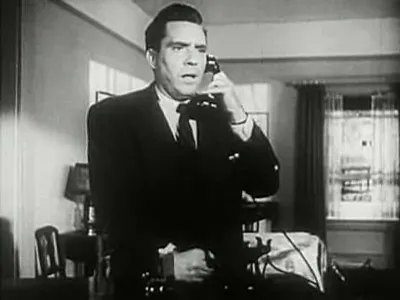
Two location choices are especially significant to the film noir movie’s texture. First, the Market Street sequences — including a “stolen shot” of Edmond O'Brien running through crowds — provide an unvarnished urban realism. The production did not secure city permits for some scenes, which contributes to a spontaneous immediacy and occasionally visible pedestrians who are startled by the actor’s presence. Second, the Bradbury Building and the Million Dollar Theater in Los Angeles are used to great effect. Those architectural icons reinforce the noir movie’s sense of urban grandeur turned ominous.
Thematic Inquiry: Identity, Documentation, and Moral Reckoning
At a thematic level, D.O.A. interrogates how bureaucratic artifacts — a notarial ledger entry, a bill of sale — can determine destiny. The missing bill of sale, a single sheet that would exonerate or condemn, becomes the moral fulcrum of the film noir movie. The plot insists upon the tragic ironies of modern life: a man’s fate is not decided by courage or virtue but by paper and the decisions of venal actors. The notary’s signature, meant to certify truth, becomes a curse.
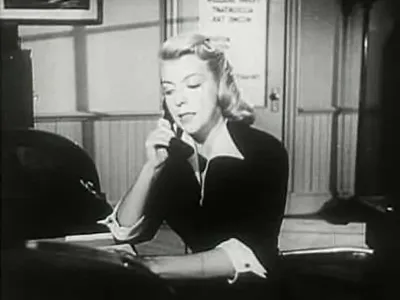
Another recurring thematic concern is the transformation of Bigelow himself. Prior to his poisoning, he is an efficient functionary: not flashy, not heroic, simply competent. The toxic diagnosis produces a radical shift: mortality sharpens his moral vision. This noir reversal allows the film noir movie to posit that only with death made imminent does the protagonist fully live — an existential irony often explored in noir texts. Frank Bigelow’s final days are simultaneously a detective’s quest and a personal awakening.
Noir Motifs and Moral Ambiguity
D.O.A. is classic in its employment of noir motifs: the femme fatale refracted as complicated modern womanhood, the corrupt insider who manipulates the system (Halliday), the criminal underworld that mediates commerce (Majak), and the city as a labyrinth of anonymity. Yet the film resists clichés by rooting its moral ambiguity in institutional rather than purely individual failings. The villainy is not just in dark alleys; it is in offices, ledgers, and quiet betrayals — an especially potent form of corruption for a film noir movie that interrogates postwar America’s civic and commercial realities.
Structure and Pacing: How Time Becomes a Character
One of the film noir movie’s most effective devices is the countdown structure. The ticking clock is not merely a plot contrivance; it is thematically resonant. Bigelow’s limited time reframes every interaction as urgent; conversations that would normally be mundane become charged with meaning. The flashback frame also inverts the usual detective chronology: instead of revealing clues forward in time for an unknown hero, the film gives the audience the endpoint from the start and forces them to watch agency, motive, and consequence reassemble into understanding.
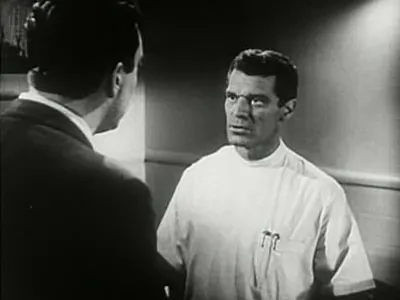
The film noir movie’s pacing is brisk without being breathless. Scenes are efficient: dialogue carries expository weight, character introductions are memorable and quick, and the film avoids detours that don't serve the central puzzle. Maté’s economy of storytelling ensures the audience never loses track of the stakes while maintaining a mood of dread that intensifies as the runtime progresses.
Critical Reception and Legacy of a Film Noir Movie
Upon release, critical reception for the film noir movie was mixed, with some contemporary reviewers finding the plot straightforward and plodding. The New York Times described D.O.A. as “a fairly obvious and plodding recital” that nonetheless featured a driving performance by O’Brien and a pleasant presence by Britton. Over time, however, reassessment has elevated the film’s status, and critics and scholars have identified its ironies and structural daring as vital elements of noir cinema. By 1981, critics like Foster Hirsch celebrated Bigelow’s final search as “noir irony at its blackest,” arguing that the protagonist’s last acts are the highest articulation of his life.
Beyond critical reappraisal, the film noir movie’s legacy includes notable remakes and cultural influence. The property fell into the public domain due to a missed copyright renewal, which facilitated remakes including Color Me Dead (1969), D.O.A. (1988), Dead On Arrival (2017), and a 2022 adaptation. Its preservation status is significant: in 2004 the film was selected for preservation in the United States National Film Registry for being “culturally, historically, or aesthetically significant,” a recognition that cements its place as a film noir movie of enduring importance.
The Moral Economy: Paper, Proof, and the Modern City
The film noir movie’s moral economy revolves around proof — the idea that objective documentation can either vindicate or condemn. The missing bill of sale symbolizes how trust in institutional documentation can be weaponized. Bigelow, who has dedicated his life to certifying truth, becomes victim to the very mechanisms he once served. The film thereby stages a tragic inversion: faith in civic procedures is betrayed by actors within those systems.
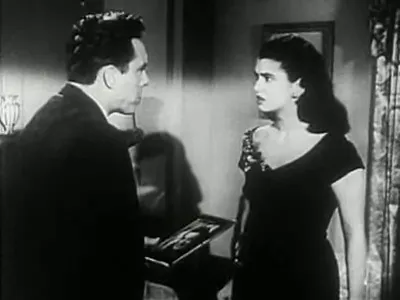
That inversion resonates particularly in the postwar American context. The film noir movie captures anxieties about modern business practices, the expansion of corporate bureaucracy, and the ease with which ordinary citizens can be swallowed by systems larger than themselves. D.O.A. is therefore not only a crime thriller; it is a moral fable about accountability, documentation, and the vulnerability of decency in an age of transactional corruption.
Remakes, Influence, and Continued Relevance
D.O.A.’s influence extends beyond its immediate remakes. Its central conceit — the protagonist given a fatal diagnosis who then pursues the cause — has appeared in numerous forms across cinematic history. As a film noir movie, it demonstrates how noir narratives can be both intimate and systemic. The enduring fascination with the film is partly due to its narrative efficiency and partly due to its thematic universality: mortality forces moral clarity, and moral clarity forces confrontation with institutional injustice.
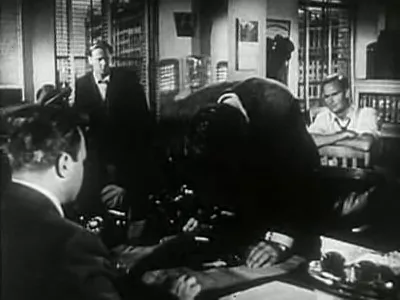
The film’s public-domain status contributed to frequent screenings, reinterpretations, and scholarly attention. Its selection for the National Film Registry underscores that the film noir movie resonates beyond genre constraints and holds a larger cultural significance. For students of film history, D.O.A. exemplifies how genre cinema can distill social anxieties into a compact, emotionally resonant package.
Why D.O.A. Remains Essential Viewing for Students of the Film Noir Movie
D.O.A. captures several elements that define the best film noir movies: the ordinary protagonist placed in extraordinary moral jeopardy; a city that functions as a labyrinth of moral bankruptcy; a script that privileges suggestion, implication, and moral consequence over sensationalism; and a finality that refuses Hollywood’s easy redemption. The film is short, efficient, and unadorned — traits that allow its thematic concerns to take center stage without distraction.
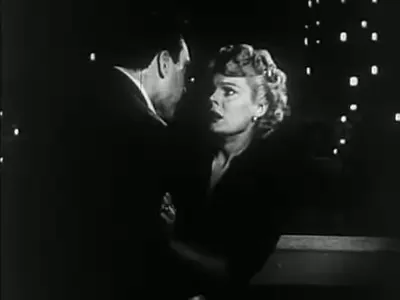
Moreover, D.O.A. is a textbook in the economy of narrative: it demonstrates how a single, well-conceived premise can sustain a full-length feature when executed with clarity and precision. Its mix of detective plotting and existential meditation renders it particularly useful for discussions of genre hybridity in the film noir movie tradition. For critics, students, and cinephiles, the film offers a model of how moral drama can be compressed into taut cinematic storytelling.
Technical Notes and Credits
The film noir movie benefited from a seasoned technical crew. Ernest Laszlo’s cinematography provides the stark monochrome palette; Arthur H. Nadel’s editing ensures the pacing remains propulsive; Dimitri Tiomkin’s music heightens the film’s emotional and thematic register; and the collective professionalism of a cast that includes Edmond O'Brien, Pamela Britton, Luther Adler, William Ching, Beverly Garland, Neville Brand, and Laurette Luez offers performances that swing between naturalism and noir archetype.
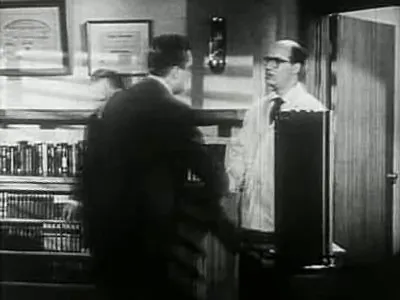
The film’s production companies — Harry Popkin Productions and Cardinal Pictures — and its distribution through United Artists situate it within the independent production model of its era. The pragmatic, location-driven approach and modest production values contribute to the film noir movie’s grounded aesthetic. Additional production trivia, including the use of the Million Dollar Theater’s marquee in Los Angeles and the stolen Market Street shot, reveal a production willing to exploit real-world textures for cinematic authenticity.
Final Analysis: The Last Hours as Moral Triumph
In the final analysis, D.O.A. positions the last hours of an ordinary man as a moral triumph. Frank Bigelow’s discovery of the truth does not save his life, yet it restores a sense of moral order. The film noir movie’s bleakness is not nihilistic: it insists that truth and accountability retain value even when they do not lead to physical survival. That is the film’s tragic beauty.
"One of the film's many ironies is that his last desperate search involves him in his life more forcefully than he has ever been before... Tracking down his killer just before he dies — discovering the reason for his death — turns out to be the triumph of his life."
This critical observation crystallizes D.O.A.’s central paradox and is precisely why the film retains a vital place in discussions about the film noir movie. It is not merely that the protagonist unravels a crime; it is that the unraveling redeems a life that had been mechanically lived. Bigelow’s death does not nullify his victory; rather, it consecrates it.
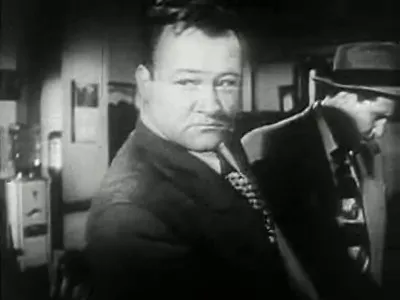
Conclusion: D.O.A. as a Moral and Aesthetic Landmark of the Film Noir Movie
D.O.A. remains a consummate example of the film noir movie: compact, morally driven, elegantly constructed, and emotionally candid. Its premise is deceptively simple, yet it supports a complex meditation on justice, mortality, and the fragility of civic trust. The film’s enduring legacy — including its inclusion in the National Film Registry, numerous remakes, and continued critical attention — underscores its significance for both genre study and film history more broadly.
For scholars and lovers of classic cinema, D.O.A. provides a case study in how a film noir movie can distill anxieties of its era into a narrative both immediate and timeless. Its use of real urban locations, taut scripting, and decisive performances ensures that it will remain essential viewing for anyone interested in how noir translates existential fear into cinematic form.
Recommended Viewing Notes
- Pay attention to the opening police-station framing device; it sets thematic expectations for the entire film noir movie.
- Note how mundane objects — a notarial ledger, a bill of sale, a swapped drink — wield enormous narrative power.
- Observe the contrast between Bigelow’s small-town sobriety and the urban social scene; the film noir movie leverages this juxtaposition for moral tension.
- Listen for the score’s economy: it punctuates without overwhelming, an approach typical of the film noir movie’s restraint.
Legacy and Preservation
The film noir movie D.O.A. has been recognized for its cultural and aesthetic value and is preserved in the United States National Film Registry. Because of a lapsed copyright renewal, the film entered the public domain, enabling widespread access and reinterpretation. Its influence on later noirs and thrillers attests to the durability of its central premise and the effectiveness of its moral inquiry.
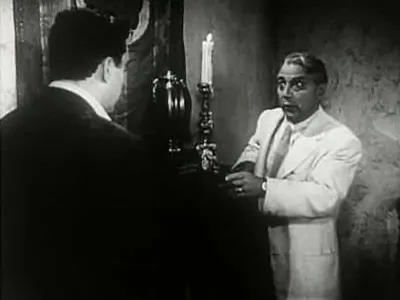
Closing Thoughts for the Classic Cinema Enthusiast
As a classic cinema critic would note, D.O.A. exemplifies how genre cinema can attain moral seriousness without abandoning narrative propulsion. It is a film noir movie that understands the human consequences of institutional corruption and the dramatic potential of time limited by impending death. For anyone invested in the evolution of crime films, noir aesthetics, or moral drama, D.O.A. is indispensable. Its spare architecture and emotional honesty reward repeated viewing and sustained reflection.
Ultimately, D.O.A. proves that the most haunting mysteries are not those of whodunit, but of what it means to live rightly when the clock is mercilessly turned against a man. For its economy, its heart, and its moral clarity, D.O.A. remains a foundational film noir movie.
